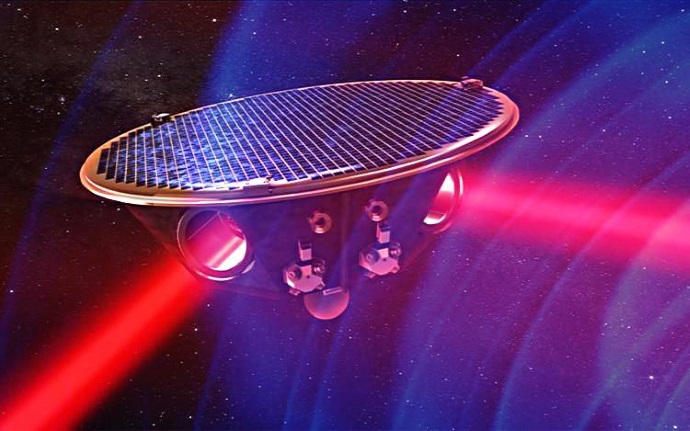June 20th 2014
When the European Space Agency (ESA) sends the “3rd Large Mission” into space in 2034, its goal will be to detect gravitational waves. Scientists at the Laser Zentrum Hannover e. V. (LZH) have now begun to develop fiber amplifiers for the required lasers.
The task of the Single-Frequency Laser Group of the LZH almost sounds trivial: The fiber amplifiers developed by this group should be used to post-amplify a special laser with a low output. However, the general framework of the project eLISA makes laser development a real challenge: The choice of optical components that can be used is highly limited.
Challenge: Simple and fit for use in space
„Since the availability of resources in space is very limited, the amplifier in planning must work very efficiently”, says the head of the group Dr. Peter Weßels, when addressing the task. “At the same time, the setup must be kept as simple as possible, so the laser can be qualified for use in space.”
Detecting miniscule movements over enormous distances
Despite the high limitations, the laser must provide high performance. The laser beam must travel over a distance of around one million kilometers between the mother satellite and both daughter satellites. Once it arrives, the beam is regenerated and sent back the same distance. The differences in the phase of the returning light can be used to conclude distance changes in space on the subatomic scale, the gravitational waves.
The scientists working with Dr. Peter Weßels want to develop a so-called „Engineering Qualification Modell“ within the next three years. Such a model is not yet completely ready for use in space, but the setup and design is quite similar to the later model.
Apart from the LZH, the Fundação Faculdade de Ciências da Universidade de Lisboa, Portugal, and the Czech Space Research Centre s.r.o., Czech Republic, are working on the development of the laser system for the eLISA mission. The developmental project is headed by the Portuguese company LusoSpace Lda.














